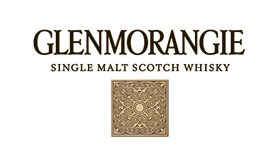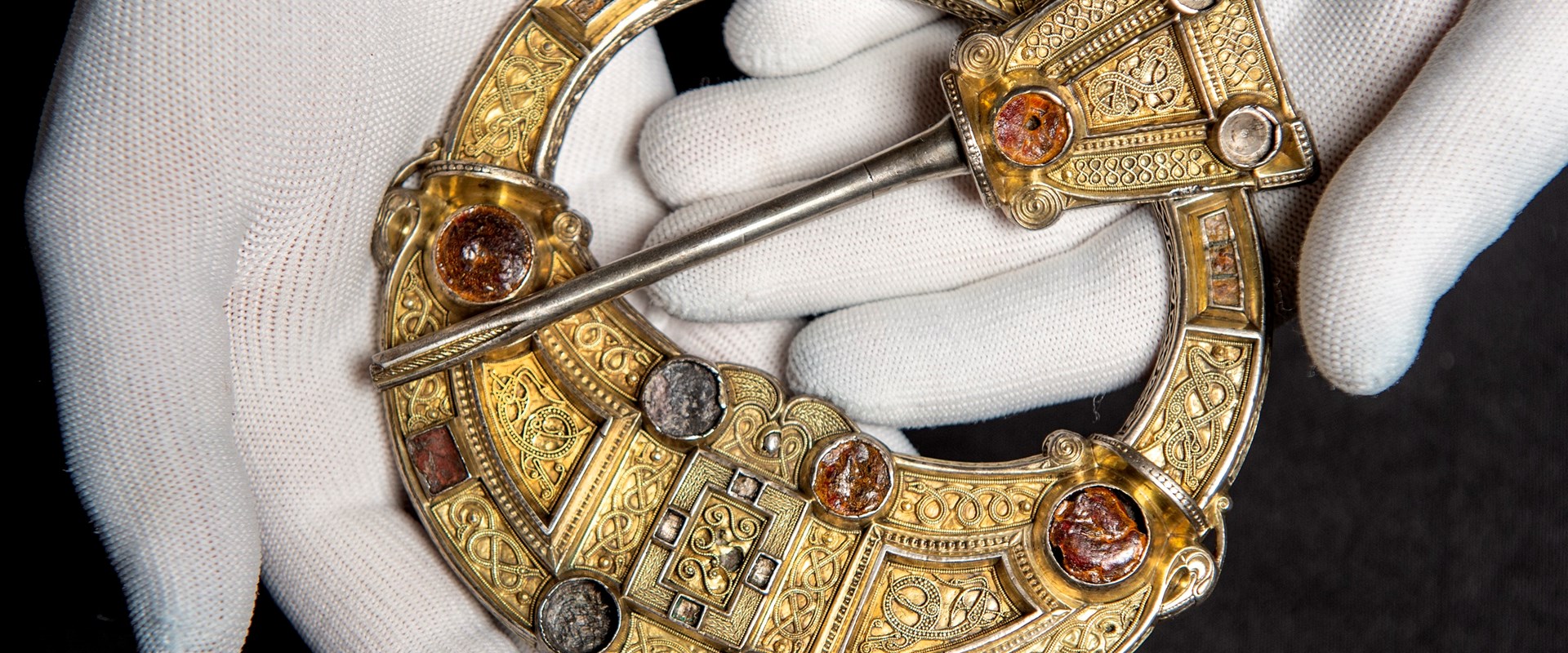#Glenmorangie
nms.ac.uk/glenmorangie
A new book, Crucible of Nations: Scotland from Viking Age to Medieval Kingdom, reveals that Scotland was a melting pot of diverse ideas from as early as the medieval era.
The book presents a new understanding of the archaeology of Scotland from the 9th to 12th centuries AD, covering the Viking Age to the formation of the kingdom of Scotland.
The extensive study of hundreds of artefacts offers a fresh perspective on the period, tracing the way in which the kingdom of Scotland was forged from the interaction between several cultural groupings – including people speaking languages such as Pictish, Gaelic, British, Old English and Old Norse. Many objects indicate the sharing of ideas, language, techniques and materials across a diverse population which the evidence suggests interacted and moved around more than was previously thought.
Crucible of Nations looks at the impact of the Vikings, the disappearance of The Picts and the emergence of Alba, the Gaelic-speaking kingdom that formed the core of the medieval kingdom of Scotland.
The book, written by National Museums Scotland’s Dr Adrián Maldonado, is the latest instalment from the Glenmorangie Research Project, a 13-year partnership which has seen the medieval archaeology of Scotland from the early medieval period to the end of the Viking Age examined in a way that has never been done before.
The richly illustrated book contains over 200 new images of objects from the National Collection, from iconic items such as the Hunterston Brooch and the Skaill Hoard to new discoveries such as an Anglo-Saxon runic inscription from the Pictish kingdom and a carnelian bead from as far afield as India found in the Scottish Borders.
Dr Adrián Maldonado, Glenmorangie Research Fellow at National Museums Scotland said:
“Crucible of Nations explores what material evidence tells us about this important, yet poorly understood period in Scottish history. What’s new here is that we take in multiple perspectives on the events of this the Viking Age – Picts, Gaels, Britons, Scandinavians, and Anglo-Saxons, all living in this one corner of Britain. There is more to the Viking Age than just Vikings.”
“When we examine these collections together, the archaeology gives us a much bigger picture of a Scotland forged by its diversity, with new identities born out of shared experience. One of the most surprising insights is how much of what we think of as ‘Viking’ material in Scotland includes things made in Britain and Ireland.”
Dr Chris Breward, Director of National Museums Scotland, said;
“Crucible of Nations is a case study in the importance of a collection like that of National Museums Scotland. The nature of our collections and expertise enables us not just to study and preserve recent discoveries like the Galloway Hoard, but also to go back and apply new thinking and technology to existing material, and to make new discoveries. It also shows the value of dedicated research, and great credit is due to The Glenmorangie Company for having supported this innovative partnership research model for the last 13 years.”
Since its launch in 2008, the Glenmorangie Research Project has enabled National Museums Scotland to enhance public understanding of the archaeology and history of medieval Scotland through two major publications and a host of other activity ranging from artistic commissions to exhibitions including Scotland’s Early Silver.
Thomas Moradpour, President and CEO of The Glenmorangie Company said:
“We are delighted to have supported the production of this wonderful publication, whose rich illustration and new insights show the value of a project which began more than a decade ago, and which delves into this pivotal period when Scotland became a nation.”
The project is a pioneering partnership between The Glenmorangie Company and National Museums Scotland that was inspired by the Hilton of Cadboll stone. This early medieval sculpture was found close to the Glenmorangie distillery in Tain, Easter Ross, and is on display at the National Museum of Scotland in the Early People gallery. The carvings on the stone provided the inspiration for the Glenmorangie brand logo.
Crucible of Nations: Viking Age to Medieval Scotland is out now and available to order online from Books – National Museums Scotland Shop (nms.ac.uk), in the shop at the National Museum of Scotland and in all good bookshops
The book was the subject of a recent online event, The Glenmorangie Annual Lecture, hosted by Sally Magnusson with contributions from Adrián Maldonado and historian Michael Wood. A recording of the event is online: Rediscovering Viking-age Scotland with Michael Wood (nms.ac.uk).

Ends
December 2021
Further information on exhibition and images from: Bruce Blacklaw or Alice Wyllie, Press Office on 0131 247 4165/0131 247 4288 or email b.blacklaw@nms.ac.uk and a.wyllie@nms.ac.uk
For further information about Glenmorangie please contact:
Amy Moore, Weber Shandwick: amy.moore@webershandwick.com / 0141 343 3385
Stacey Bridges, Weber Shandwick: sbridges@webershandwick.com / 0131 460 3007
Notes to editors
About National Museums Scotland
National Museums Scotland is one of the leading museum groups in the UK and Europe and it looks after collections of national and international importance. The organisation provides loans, partnerships, research and training in Scotland and internationally. Our individual museums are the National Museum of Scotland, the National Museum of Flight, the National Museum of Rural Life and the National War Museum. The National Museums Collection Centre in Edinburgh houses conservation and research facilities as well as collections not currently on display.
Twitter: @NtlMuseumsScot
Facebook: www.facebook.com/NationalMuseumsScotland
Instagram: @NationalMuseumsScotland
Bheireadh Oifis nam Meadhanan eadar-theangachadh Gàidhlig den bhrath-naidheachd seachad do bhuidhinn mheadhanan bharantaichte. Cuiribh fios do dh'Oifis nam Meadhanan airson bruidhinn air cinn-latha freagarrach.
About Glenmorangie:
Glenmorangie’s whisky makers use endless imagination and five key ingredients – wood, water, barley, yeast and time – to dream up delicious single malt whiskies. They’ve been honing their craft for more than 175 years. They create a delicate and fruity spirit in stills as tall as an adult giraffe to allow for more taste and aroma. Led by Director of Whisky Creation Dr Bill Lumsden, this crackerjack crew are on a mission to bring new flavours and possibilities to the world of single malt.
Glenmorangie celebrates the joy of delicious single malt in every part of its universe, from Glenmorangie House to its colourful new brand campaign, shot by famed photographer Miles Aldridge. With its tagline “It’s kind of delicious and wonderful”, Glenmorangie invites whisky lovers old and new to see themselves in Glenmorangie’s world.
About Glenmorangie’s Research partnership with National Museums Scotland:
Glenmorangie has always taken inspiration from its ancient provenance: the whisky’s Signet logo is informed by the 8th-century Hilton of Cadboll cross-slab, an ornate sculpture carved by the Picts. This originally stood near Glenmorangie House, Glenmorangie’s Highland home, and is now on display in the National Museum of Scotland, Edinburgh. Glenmorangie began its pioneering partnership with National Museums Scotland in 2008, with the aim of gaining insight into the Early Medieval period in which the Cadboll Stone was created. Since its launch in 2008, the award winning Glenmorangie Research Project has enabled National Museums Scotland to enhance public understanding of the archaeology and history of medieval Scotland through two major publications and a host of other activity ranging from artistic commissions to exhibitions including Scotland’s Early Silver. Most recently in March 2020 the Glenmorangie Commission was unveiled - a major piece of metalwork by the internationally renowned metalsmith, Simone ten Hompel. Commissioned by National Museums Scotland and The Glenmorangie Company, Coordinate explores Scotland’s journey through time, its changing landscape and the continual rediscovery of its past and is on display in the Making and Creating Gallery of the museum.
Responsible Drinking:
The Glenmorangie Company advocate responsible drinking and suggest that drinkers savour Glenmorangie whiskies in moderation and in line with recommended daily guidelines for alcohol consumption.

